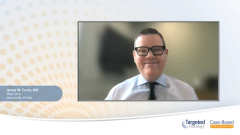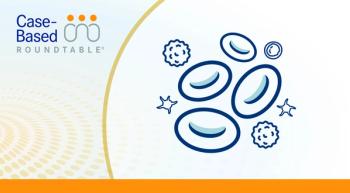
Practical Tips for Diagnosing and Treating BPDCN
James Foran, MD, offers valuable insights on recognizing and treating blastic plasmacytoid dendritic cell neoplasm, emphasizing the importance of early diagnosis, collaboration with specialists, and staying informed about therapeutic advances.
Episodes in this series

Transcript:
James M. Foran, MD: So what’s my advice for treating BPDCN [blastic plasmacytoid dendritic cell neoplasm] in your practice? The first is to recognize the diagnosis. These patients usually have a short history of illness…not years of illness. They frequently come through a dermatology practice. They often have extramedullary involvement with cutaneous nodules or masses. As in this case, the nodules can have a purpuric appearance or sometimes even an eschar-type appearance. They don’t have to. It’s important to get a full thickness skin biopsy and work with your dermatologist and dermatopathologist in that situation to [confirm] the diagnosis.
CD123, CD4, CD56, think 1, 2, 3, 4, 5, 6, and some other markers such as TCL1, as in this case, help you make the diagnosis. Not every [patient] has bone marrow and blood involvement at presentation. It can be isolated to the skin to start with or even lymphadenopathy, but patients should get a bone marrow biopsy, peripheral blood evaluation. We’d recommend, particularly when the blasts have cleared, to evaluate the CSF [cerebrospinal fluid], but we evaluate the CSF also because a small number [of patients], up to 20%, can have CSF involvement at some point in their journey….
We would initiate therapy with tagraxofusp. It’s important that you train yourself and your team on capillary leak syndrome, the indications for holding a dose and for albumin replacement, the monitoring that comes with it, drug interactions—particularly for the elevated liver function tests—and monitoring and managing the cytopenias as you would for any acute leukemia, and also tumor lysis and DIC [disseminated intravascular coagulation panel]. This has those possibilities as well. If a patient initiates intensive chemotherapy, it should be with the intent of consolidating with allogeneic transplant; the best results are in first remission. The allogeneic transplant results aren’t as good in subsequent remissions.
We would advocate looking for a clinical trial whenever you can; it’s important for patients to get access to new treatments, and there’s a community. You’re not on your own when you’re doing this. You can look at the North American BPDCN Consortium statement that Dr Naveen Pemmaraju and Dr Andrew Lane at Dana-Farber [Cancer Institute in Boston, Massachusetts,] and many of us contributed to. You can reach out to other centers of excellence…at Mayo Clinic, at Duke [University], at other centers with experience and expertise, because people will want to help you. This is a rare disease. They’ll want to evaluate for trials, and they’ll want to support you, support those patients, and find ways to get them to transplant.
Transcript is AI-generated and edited for readability.










































